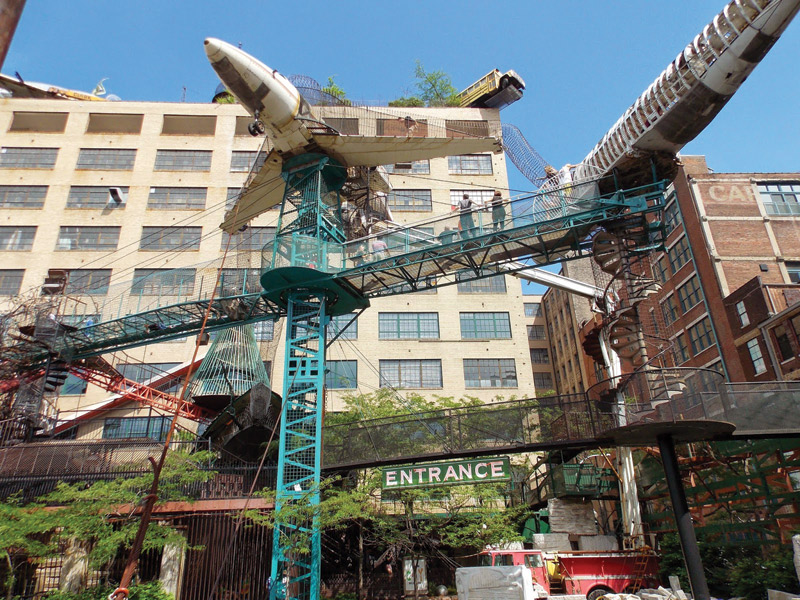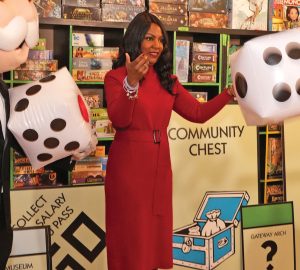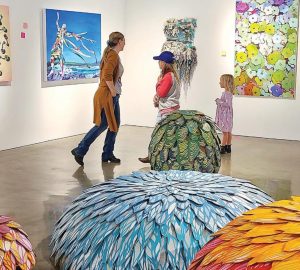downtown
A company in Oklahoma has bought City Museum. Nobody panic. They’re not going to pick it up lock, stock and barrel and move it to a small town like Muskogee. But it was bought by Premier Parks, a company that owns and operates theme parks. Well, what’s the theme of City Museum? And could anyone tell us for sure what the funky place is, anyhow? Founder Bob Cassilly might have been able to—until his untimely death in 2011, when reportedly the bulldozer he was operating rolled over on him at a property he was hoping to develop into something called Cementland. Would you have called that a theme park? No. Like City Museum, if ever completed, it eventually may become the most glorious whatchamacallit you ever experienced in your life. Meanwhile, what about our beloved City Museum, one of the attractions that make the StL one of a kind? The attitude of the buyers is that if it ain’t broke, don’t fix it. Rather, Premier Parks hopes that some of the attraction’s uniqueness is contagious. It owns and operates entertainment venues (well, most of us call ’em amusement parks) in the United States and Canada. The company’s top fun-lover used to be CEO of Six Flags Entertainment Corp. He could envision creating similar attractions in other markets … I mean, who wouldn’t? Plans are to market City Museum outside the area. (Nary a peep about admission prices.) While we wait for that other shoe to drop, here’s a retro marketing idea. Repaint all those barns with roofs that say, ‘See Rock City’! Alas, most of those have deteriorated into a few rotten boards and some crumpled, rusty metal. Better idea? Paint newer barns.
the metro
Drug cartels in the Great White North? Horrors! Maybe we’ll need to build a wall on the northern border to keep out marijuana-infused beverages. Talk about drugs flowing into the country! OK, we’re being intentionally alarmist since national emergencies seem to be all the rage these days. Anyhow, seems that InBev, parent company of Anheuser-Busch, entered into a research partnership with a medicinal cannabis manufacturer late last year. This $100 million deal with Tilray Inc. includes an equal investment by both companies, enabling them to conduct joint research on nonalcoholic, cannabis-infused beverages. Wow—when can we get it at Walgreen’s? (Pipe down, pothead; it’ll be a while. You’re 30 and have been doing nothing but sleeping, toking and playing video games in mom’s basement for half your life. Did you hear that? Oh … headphones. Read on!) Notably, the alliance is confined to Canada, where marijuana is legal for recreational use. Through the partnership, AB InBev is likely to bolster its position in the marijuana industry, while the cannabis maker will cherish the legendary brewer’s unparalleled experience. The involvement of the company behind Budweiser in recreational cannabis brings new legitimacy to an industry previously the domain of drug cartels, and $100 million is hella cash. Back in the day, parents and other authorities warned juveniles that marijuana was a gateway drug to nastier, horribly addictive stuff. Well, that will hold true if we get something that tastes like an energy drink but has THC, pot’s active ingredient, in it. It could be the gateway beverage to beer and pork rinds, and beer is the gateway to vodka. Had to bring the real enemy, the Russians, in here somehow.
u.city
Last issue, you read about the chance to freeze your rears off at the Frozen Buns Run, the 5k and 10k races that begin in The Delmar Loop this Saturday (Jan. 19). Or maybe you didn’t. Maybe it’ll be too dang warm to freeze anything. We’re not into weather forecasting at T&S; our intermittent publishing schedule would render us about as helpful as Farmers’ Almanac. But there’s another way to cool off your tuchus this weekend, even if it’s hotter than July: Ice slides will be among the ice sculptures placed throughout The Loop. That’ll be pretty cool. The annual Ice Carnival begins Friday at 5 p.m. with the Snow Ball at the Moonrise Hotel on the stretch of Delmar near The Pageant. Snowball fights will not be the order of the evening, but special drinks, some wacky, may be purchased, and you can expect costumes on the order of Disney’s Frozen until 2:30 a.m. Saturday. A $5 donation or a canned good to benefit Operation Food Search gets you in. You can enjoy icy fun and frolic, and some not so icy, through Sunday at 5 p.m. Enjoy everything from a zipline to skateboarding and ice carving demonstrations. But don’t stay so late at the Snow Ball that can’t get your buns out of bed in time to freeze ’em off at the run. It starts at 10 a.m., the same time the Carnival will be slippin’ and slidin’ throughout The Loop.
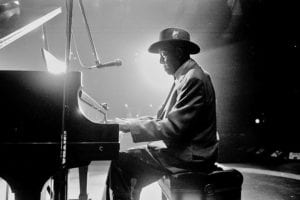 richmond heights
richmond heights
‘Johnny B. Goode’ is the name of perhaps Chuck Berry’s most famous song, which was released in 1958 and since has been covered by countless garage bands and recorded by the likes of blues giant Johnny Winter. The song was initially inspired by Johnnie Clyde Johnson, Berry’s longtime piano player. And Johnnie Be Good! is the name of a documentary about Johnson being produced by KSDK-TV journalist Art Holliday, for which a Feb. 2 trivia night fundraiser is scheduled at The Heights community center in Richmond Heights. There’s no statue of Johnson in the metro. That’s too bad, because if there hadn’t been a Johnson, there might not have been a Berry. In 1952, Johnson hired Berry, 26 at the time, to play guitar in his band. Not too long before his death at 81 in 2005, Johnson had played around town, including the Webster Groves Jazz and Blues Festival. He’s a member of the Rock & Roll Hall of Fame. But his influence on American culture went beyond an uncanny gift for tickling the ivories. He was posthumously awarded the Congressional Gold Medal for breaking racial barriers in the military: Johnson was a member of the Montford Point Marines. The African-American unit endured racism and inspired social change while integrating the all-white Marine Corps during World War II. No wonder there’s such a famous song named after the man. The recording is even aboard Voyager, a spacecraft launched in 1977, just in case future civilizations discover it millions of years from now, untold light years away from the planet we call home. Interested in a little rock ’n’ roll trivia to benefit Holliday’s production? Visit jjthemovie.com.
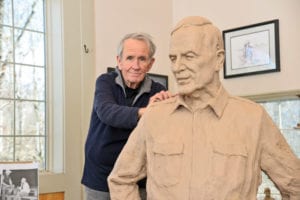 notable neighbor: wright city
notable neighbor: wright city
Most of the bronzes Harry Weber sculpts ‘give 110 percent,’ much like the heroes they represent, from Dred Scott and Chuck Berry to Ozzie Smith, Stan Musial, Bob Gibson and James ‘Cool Papa’ Bell. “If you make them bigger than life, everybody’s happy,” says Weber, perched on a ladder and shaping clay on a standing figure, one of four men nobody from St. Louis has ever heard of. They’re humorists (110 percent or so life-size, a couple of them sitting around a table) who hailed from Nacogdoches, Texas. Weber was preparing the works for casting into bronze in his clays-pattered studio at Bronze Fox Farm in Wright City. If you don’t know Weber’s work, you must be a Mets fan, pond scum that’s never seen his work outside Busch Stadium, in U. City, at the Old Courthouse or on the St. Charles riverfront, where his two-times life-sized Lewis & Clark grouping stands. It’s of one explorer standing in the boat, the other bent over, holding a dog that looks as though it could jump into the water at any moment. “I like things that move,” Weber says. Some of his favorite moves are outside Busch, two-thirds life-size: Ozzie lunging to snag a bouncer, Musial connecting for one of his 3,630 hits, Gibson releasing a pitch that would get most people arrested for speeding. He had to use his imagination for Bell, of whom most photos were posed; by Dizzy’s time, high-speed photography had entered the picture. Weber had nine images of Dean’s pitching to work from. A few more things have changed in the thousands of years bronzes have been created, one of the game-changers being stainless steel. Weber couldn’t have captured hockey legend Bobby Orr in mid-air outside Boston Garden if he were working in the third century BC. Since stainless is part of the armature, “Orr has 1,100 pounds of bronze on his right toe. [Sculptor Auguste] Rodin’s stuff would have moved more if he’d had stainless steel,” Weber says. Instead, Rodin’s most famous piece, The Thinker, just sits there, thinking. Chuck Berry, as sculpted by Weber, is captured in his famous duck walk. (To answer your nagging question: Weber, born in 1942, graduated from Country Day after a stint at U. City High.)





